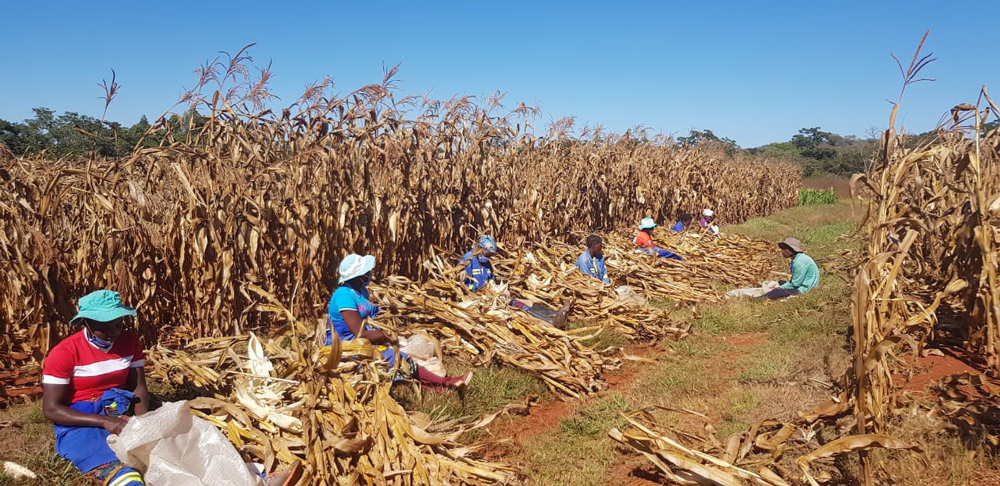
Driven by the need to improve food security in sub-Saharan Africa (SSA), BRECcIA researchers are undertaking research to model crop yield and yield gap of maize in SSA and to further understand drivers of productivity gap under different socio-economic and biophysical environment contexts. Understanding the drivers of poor productivity will aid in identifying solutions to improve food production and ultimately food security. Hydrological and crop models are being coupled with earth observation data to estimate crop yield at fine spatial scale. During the 2019/20 cropping season the team embarked on collecting field data and socioeconomic household data in 150 farmers’ fields in the lake Chilwa basin in Malawi. In addition, maize experimental trials were conducted in Malawi and Zimbabwe. The project was well received by the local governments and rural communities who allowed BRECcIA researchers to collect ground data on leaf area index and yield in their fields. In addition, rural communities and extension workers assisted in the establishment of the experimental trials (planting), management of the trials (weeding and data collection) and determination of yield. They were eager to learn more on agricultural research and to also share their knowledge in managing maize trials. To determine the causes behind yield gaps, meteorological, biophysical and socio-economic data are being collected in the different regions. All the data being collected will be used to develop a spatialised crop model that can be applied to determine optimal crop management in order to reduce the observed yield gap and to optimize the environmental performance of maize. This can guide farmers on more productive management and also guide policies on how to improve productivity of rural small holder farmers which will in turn improve food security and livelihoods.


This is very interesting research particularly given the importance of maize as both food and cash crop. How many varieties of maize are grown here? What are the average farm sizes?